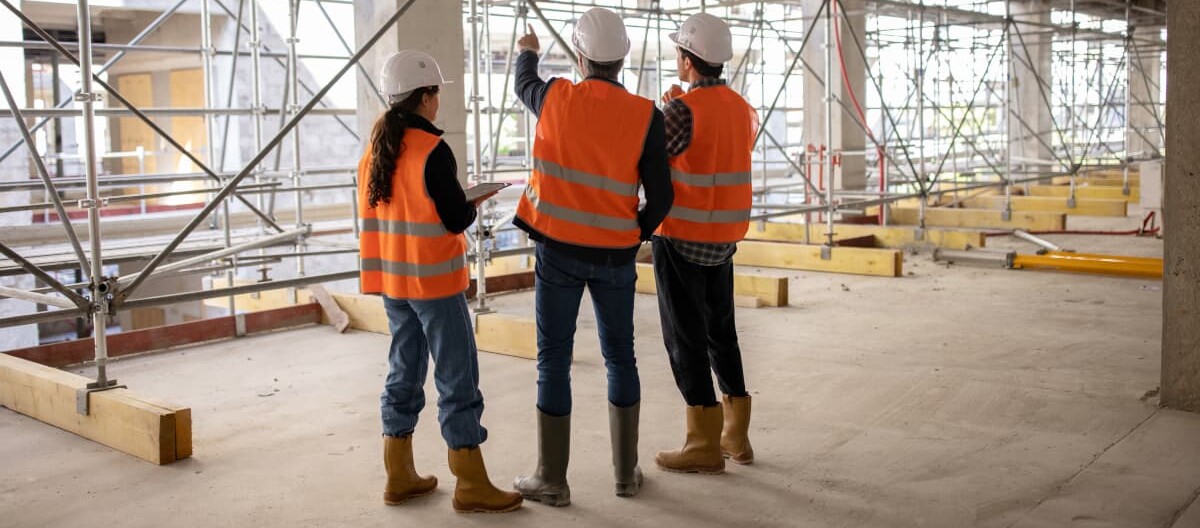Learning lessons from the past
In recent years, the UK construction industry has experienced a number of downturns. So how might the current recession affect its fortunes? An analysis of Office of National Statistics data for every UK downturn from the 1950s onwards shows a trend for construction output growth to reduce ahead of recessions, usually falling more than GDP, but then growing faster than GDP on recovery. The good news is that it has often provided a key driving force to aid in economic recovery. In the recession of the 2000s, quarter-on-year growth of construction output fell to -19.0% while GDP dropped to only -5.9%. However, in the aftermath, construction grew to 15.6% against GDP’s 3.1%.
Residential construction is the key sector
Demand in this crucial sector has been impacted by the fall in disposable incomes, rising interest rates leading to higher mortgage interest rates, and the cost of living crisis. House prices are expected to decline by more than 10% in 2023 and 2024. And the decline in residential building remains a cause for concern: cutbacks to new residential projects accounted for the sharpest fall in residential construction activity in almost three years.
However, private housing remains a major source of demand in the construction industry: construction output figures for March 2023 show an increase of 2.4% for private housing from February 2020 to March 2023. Private housing repair and maintenance is also in demand, with an increase of 5.7% (£411 million) in the first quarter of 2023.
The construction industry in 2023: state of play
The UK construction industry has been through some tough times in recent years, with the COVID-19 pandemic and the current economic recession hitting the sector particularly hard. The number of overdue payments, payment plans and insolvencies doubled in 2022, with inflation and wage increases putting pressure on companies’ cash flow. While there’s some anecdotal evidence that inflation and material costs are easing, companies are still reporting that customers are hesitant to request work due to cost factors.
All segments of the industry have been hit by increased energy and construction material costs, resulting in companies passing on higher input prices to their customers. Although contracts since the pandemic have largely been negotiated with price escalation clauses, the issue of legacy contracts still exists for many businesses. An additional issue is the expiry of pandemic-related government support for businesses, which now has to be repaid to HM Revenue and Customs.
Government statistics, however, indicate that growth is slowly returning to the sector: in March 2023, monthly construction output volume is estimated to have increased 0.2%. This came from an increase in new work (0.7%) and was partly offset by a decrease in repair and maintenance (0.6% fall). This rise represents an increase of £24 million in monetary terms compared with February 2023, with four out of the nine sectors seeing an increase.
In addition, major infrastructure projects, including the HS2 rail project, the Hinkley Point C power station and the Thames Tideway project, are still going ahead. And ongoing Renovation Maintenance Improvement (RMI) work also sustains the construction materials industry.

Recruitment and training: challenges and opportunities
Labour availability and wage costs have become serious problems for construction companies. Both the COVID-19 pandemic and the end to free movement following the UK’s departure from the EU have exacerbated these issues, resulting in a shortage in all specialist building skills. This in turn has led to higher labour expenses and increasing cost pressure in the short- and medium-term.
There are currently more than 45,000 construction vacancies in the UK, representing 3.6% of all open job vacancies in the UK. It’s predicted that 225,000 additional workers will be required to meet UK construction demand by 2027, with the largest increases being for jobs such as carpenters/joiners and construction managers. This demand is expected to be particularly high in the South West (42,950) and the West Midlands (more than 30,000). So there are challenges facing the industry in the years to come, but excellent career opportunities for people entering the industry in the near future.
